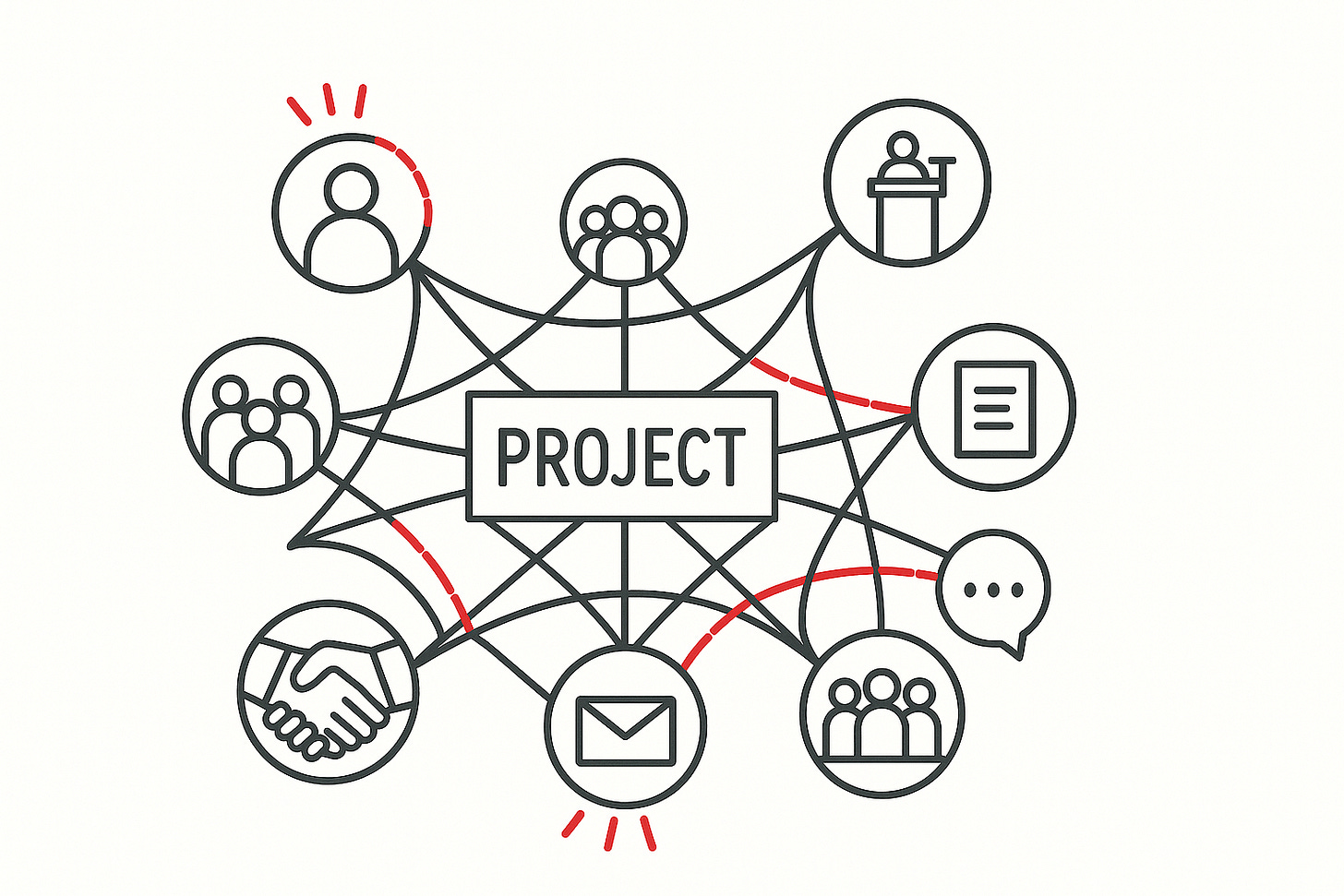Project Planning with People First
The stakeholder blueprint to align people, roles, and coordination during kickoff
This article is part of the “Project Management in Emergency Management Playbook” for Academy Subscribers.
In emergency management, stakeholders are the project. People provide the expertise to build plans, people validate them through exercises, and people ultimately determine whether preparedness efforts succeed when tested in disaster response or recovery.
Stakeholder engagement is often listed as a project objective, but in practice it’s the measure of success. Done well, engagement builds trust, draws out the perspectives we need, and creates a sense of ownership that carries into operations. Done poorly, it leads to missed voices, wasted meetings, eroded trust, and, ultimately, plans that sit on a shelf when they’re needed most.
I’ve seen both sides of this. As a project manager, I’ve felt the pressure of needing the right people in the room and working to bring them in effectively. As an executive, I’ve seen how much faster and smoother projects move when stakeholder outreach and engagement is planned well—and how quickly they stall when it isn’t.
That’s why we start every preparedness project by focusing on people. Before we dive into drafting an after-action report or designing an exercise, we lay the foundation: who needs to be involved, what role they play, and how we’ll keep them engaged. That groundwork sets the conditions for everything that follows.
Approach to Stakeholder Engagement During Kickoff
The kickoff phase is where the project team builds its foundation, and stakeholder engagement is a core part of that work. The goal at this stage isn’t to analyze every possible need or dive deep into individual perspectives—it’s to establish the framework that will guide engagement throughout the project.


